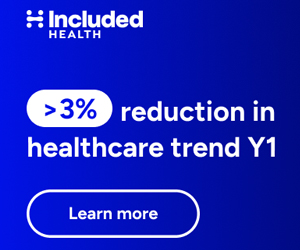While Brian is hanging with the politicos down in Washington DC, I’m in Boston at a meeting looking at the research funded by the Foundation for Informed Medical Decision Making. This is the group that looks at practice variation and how to inform patients about treatment options and is funded (in part) by Health Dialog which uses their decision tools. Health Dialog (recently bought by UK insurer BUPA)’s Analytics Group is headed by David Wennberg, Jack Wennberg’s son. Jack is of course a major hero on THCB so expect me to be in agreement with most stuff! (They were nice enough to pay my way out here, full disclosure).
Eliot Fisher, famed Dartmouth doc who is no doubt on the AMA hit list, introduced a panel on small area variation. There’s lots of very, very new (and unpublished in academic terms) data released. Most confirming everything Jack Wennberg said in 1973 (yes he’s in the room—I’m only moderately afraid of a mysterious breakout of food poisoning in the hotel!)
First up was a Brit, Klim McPerhson who was looking at surgical intervention rates in different countries. (There’s lost of issues with data being differently collected from different countries needing clinical experts and experts on data sources in international variations to work it out. It’s a big work in progress(not that’s that’s stopping Rudy Giuliani)
So what did he find? For Cardiac rates, America is high, everyone else lower save Australia. Back surgery, America much much higher for spinal fusions, and much higher for elderly people. Hysterectomy rates, greater “excess” of hysterectomy for young women in US and Canada increases meaning that the number of women with hysterectomies greater than others, but everyone overall is having a downwards trend. But it’s gone down because of increased rate of endometrial ablation and making it a second line therapy.
Overall in differences between countries? There’s high variation in the amount of variation between procedures (only hip replacement is very standardized)
What’s the difference between the UK (traditionally at the bottom) and the US? Klim thinks that its conservative medical practice in the UK, but also that we may be missing some of the data in the UK due to private surgery
Note that the data sources miss proportions in different countries (may miss outpatient surgery in US, may miss private surgery in the UK).
Lee Lucas, Maine Medical center, Lee Looked at rate of cardiac procedures in the Medicare population, and (true to the Foundation’s mission) could somewhere there be between shared decision making as part of the process. She starts with the assumption that there’s no difference in impact of either medical or interventional therapy in terms of heart attacks—proved by the fact that AMI rate has stayed flat over 1993–2001. Meanwhile stress testing has gone up very fast, revascularization (that’s actual procedures doing something to fix the heart) has gone up, but actually CABG has gone down but angioplasty (PCI) and cardiac cath (invasive imaging) has gone up. Most of the south & Florida is higher than average use. Increasing PCI rates are related directed to increasing cardiac cath rates (more caths done, exponentially more PCI.
She did a cohort study in Medicare population in 2005 (Part A & B not in HMOs). She found that there was 3 times more PCI, than CABG. AMI is common on admission (but only 12% of all PCI). She’s now looking at where they would put in decision support—for non-emergent patients about 1/3 had a hospital stay. But only 60–50% had a stress test before, and only 28% had a card cath BEFORE they had the PCI, which means the rest went in for a cath and came out with a stent. So how could we intervene for those people? Or should there be better shared decision making about the cath?
Why did the explosion in doing the cath image and the stenting (PCI) at one time? Dave Wennberg says that a) payers wouldn’t pay for two procedures, so they forced docs into making the choice—and they get paid 6 times more to do that and b) when they asked cardiologists ad hoc decisions were much more likely to include “stenting” than if they considered it over more time later (pressure to act)
Amy Aldredge is a plastic surgeon who was looking at Mastectomy vs Lumpectomy with radiation (breast conservation) for early stage breast cancer. In both cases the outcome as shown by a mid 80s random clinical trial is the same. In the 1908s and 1990s there was no change in rate of overall mastectomy despite the revelation of the trial. Jack Wennberg says that this was the the biggest failure of the lack of inclusion patient choice in decision.
Again there are more data problems—it’s hard to pick lumpectomy from other procedures (biopsy) on an outpatient basis, and hard to pick an initial action from an incidental procedure to a case already in process (may be 5–10 years). In other words she had to do lots of methodological screwing around to get to her data.
The good news is that of the breast cancer cases; mastectomies have gone down to 19%. Within lumpectomy (BCS) still similar wide vary between 69–97%. So in 20 years we have done a complete 180 change. Now BCS is preferred to mastectomy. But there are several interesting characteristics associated with increased likelihood of mastectomy. Biggest variation how sick the patient is. OK, that’s probably fine. But after that the age of surgeon matters. Surgeons above 40 20–30% higher more likely to do mastectomy and female surgeons 25% less likely to perform mastectomy. Presumably surgeon choice shouldn’t be the driver, but it is…

 Those purists
Those purists 









